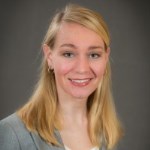Wise Words from the Corner Office
We’ve had a fun and interesting year speaking to association executives of all backgrounds and departments about how they arrived in their positions, what they love about their jobs and what challenges them. To close out 2017, we’re looking back at some of the most thoughtful insights these association professionals have shared:
On creating content for members, by members:

Meena Dayak, vice president of integrated media and communications for the American Public Power Association: Our content comes from different sources. There are developments relating to energy in all branches of federal government that we need to report on. We work to inform our members about how the changing legislative and regulatory landscape affects them. We address current trends and technology and talk about what our association is doing for members. We also tap into the knowledge of the many experts on our staff and board.
The best source of content is members themselves. One of our goals is to help members learn from each other. When we find out about cool stuff they’re doing, we share it. Learning how one utility set up a community solar farm or a battery storage unit helps other utilities glean concrete lessons and plan their own programs. Highlighting these case studies is also a good way to tell the world about the innovative, community-focused work our members do. We keep reader interests top of mind, break down complex topics, and strive to make content accessible to all audiences.
On becoming involved with and achieving advocacy-related goals:
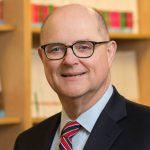
Tracy Mehan III, executive director for government affairs at the American Water Works Association: A lot of our advocacy-related communication is shoe leather. Our two lobbyists walk the halls, meet with staff and committee members, submit written and oral testimony at legislative hearings, and generally put in the time required to impact the rulemaking process. On the regulatory side, rulemaking starts out with a proposed rule. A public comment period is allowed, which we take advantage of often. We have a lot of volunteer staff who are technical experts on any given subject – disinfection or piping, for example. We develop comments for the official record. Those are major undertakings requiring scientific studies and other research. All that is brought to bear in our written comments that we formally submit to the EPA.
In addition to full-time staff, AWWA members are volunteers in service to the sector. Many are seeking opportunities for professional enrichment through interaction with colleagues. They often come to us seeking to make a difference on behalf of the industry, although sometimes we recruit or suggest people for projects based on our subject matter needs.
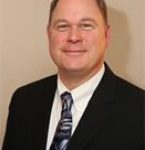
Mark McCollum, chief executive officer of the National Association of Surety Bond Producers: One of the most important actions that a trade association can do is to make sure that their members, who are first of all constituents of elected representatives, visit Washington, DC, or their elected representatives’ home offices and explain why their industry is important to the American economy. We think our industry benefits from branding through in-person contact. As your members become known by congressional offices, they enjoy the visits more and more and their Congressional representatives are kept apprised of their industry issues and concerns.
If you’re not in front of your legislators regularly, it’s easy to be forgotten. We think advocacy-based visits are a very important member/volunteer activity that needs to happen annually. We encourage members to visit with their elected officials in their home districts as well. Encouraging relationships between member companies and their elected officials has led to great successes in terms of advocating for our association and our industry.
On becoming a better association leader:

Brandon Robinson, CAE, Executive Director of the Virginia Society of Association Executives: Get involved in a local SAE. Wherever your local association is, there’s an SAE for you. Becoming a member of that community and gaining access to that professional network and source of leadership knowledge is so valuable.
Read, read, read. There’s so much good information out there, from companies, from practitioners, from consultants and from SAEs. The more you read the more opinions you’ll learn, and the better informed you’ll be. I published an article in VSAE’s newsletter one time. A member disagreed, and wrote me about it, so I published their response in the next issue. Enabling members to read both opinions helped them learn both sides of the issue more easily.
Lastly, build bridges. Build relationships. Those are key to leadership success.

Andy Curliss, Chief Executive Officer of the North Carolina Pork Council: Have a service mindset. You have to be genuinely interested in serving the membership of whatever industry your association serves, and have a passion for the mission of the people you’re going to work for. You can’t just be looking for a job – that’s not going to serve the membership. It must be more.
Anyone who’s looking to make a transition into association work should focus on the mission of the association and how they can serve it. My job is about serving the people I work for. Farmers are good people, and it’s easy to be excited about representing and advocating for their interests.
On increasing membership value:

Jeff Wilson, chief marketing officer for the Associated General Contractors of America: We have 60 staff at AGC of America. In terms of increasing the brand at the national level, it’s about consistently doing things that are part of our core mission: advocacy, public relations, impacting national legislative policy concerning construction at a national level, and shaping funding and regulatory outcomes. Most efforts to highlight our brand focus on the advocacy front. We consistently beat the drum about our positions and our messages that we provide to administration officials on what we feel is the right direction for construction. Nearly one-fifth of the U.S.’s gross domestic product is construction-related. So having a healthy, viable construction industry is critical to the overall health of our economy. We enhance the AGC brand by making sure everyone from members to chapters to construction journalists is aware that we are fighting to improve construction’s outlook.
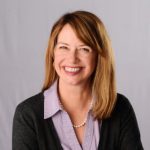
Wendy Kavanagh, CAE, executive director of the Georgia Society of Association Executives: Our desired future accomplishments revolve around supporting emerging and less experienced professionals. We want to engage that population because they are the future of association leadership. To bring them into our fold, we know we must be willing, as an organization, to pick things up and put things down. In other words, nimbleness and a willingness to keep learning is a skill that we’ll continue to need to teach. Association professionals must master the ability to discern, “How am I leading, based on the data at hand? How can I take risks in the right, responsible ways? How can I teach the younger generation what they’ll need, when we don’t know what they’ll need?” If GSAE can successfully teach the ability to pivot and still move forward, we’ll have prepared our members for almost any challenge they’ll face in their career arc.
On being prepared for every scenario at an association event:
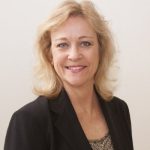
Lori Kinsey, CMP, executive director of Meeting Professionals International Northern California Chapter: The most prominent security issues depend a lot on the type and size of the event, as well as what’s going on politically, socially and culturally both locally and globally at the time. ACE keynote presenter Clarence Izzard spoke [at ACE] about being “situationally aware” and gave examples mostly about personal safety. But planners must be situationally aware about the meetings and events they plan as well. They must look at the larger worldview, the tenor of things happening in the world, ask themselves “how might XYZ affect my meeting or event, and how can I be better prepared to respond in case a negative situation unfolds?”
There’s no clear-cut answer about what security issue is most prominent. It’s more about being flexible and embracing everything going on in your area and surrounding your event. What your association deems a priority for safety is also going to depend to some degree on the number of people present at your event. Your response will be quite different for smaller events than for larger conferences or conventions. However, the need to prepare appropriately should remain the highest priority of all.
On working with sponsors to create an effective association-sponsor partnership:
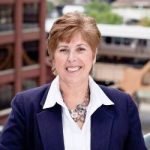
Patti Costello, M-CHEST, executive director of the Association for the Healthcare Environment: Effective partnerships are about developing relationships. I stay personally involved in each sponsor discussion. From a corporate perspective, companies really want to hear from the person in the top chair. So I make a point to be involved in the conversation and to match my level of commitment to theirs without crossing boundaries. We also provide customized benefits based on their strategic need and what we can deliver. If the ask exceeds the sponsored amount, something gets cut or they provide additional funding. It’s about demonstrating the value of what we can provide without selling out. But really, the relationships developed over time as did the trust.
About 14 years ago, the [AHE] board created an industry liaison position where an industry professional can apply for a board position. The seat is not at all tied to sponsors or companies nor does the criteria consider sponsorship engagement. The industry person is vetted in the same fashion as other board members and selected based on the same criteria as other at-large board members. The inclusiveness and feeling like a contributing member to the organization goes a long way in our industry as a whole. They have representation in the long-term strategic vision of the association, and this builds loyalty. This loyalty can get an association through tough times and provides insights from a very different perspective.

